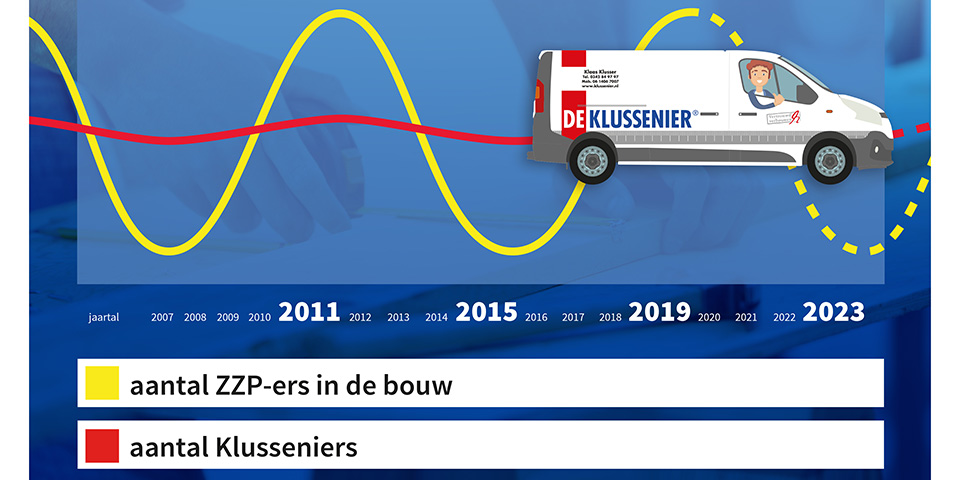
Are you well prepared for the future?
News reached us this past week that the Chamber of Commerce (CoC) registered 11% more startups in the first quarter of this year than the first quarter of last year. In total, the number of businesses April 1 of this year was over 1.9 million.
One of the sectors with above-average growth is construction. Construction showed a growth of 8% in the number of companies. This has resulted in the Netherlands having more construction and handyman companies than ever.
Interestingly, almost all the new companies are sole proprietorships. This means that the Dutch construction industry has gained a considerable number of self-employed construction workers in the past year. Most are active in specialized construction as, for example, carpenters, tilers, plumbers or plasterers.
The strong growth in the number of self-employed construction workers is good news on the one hand, but it also harbors a danger. The good news is that construction is doing well. There is a surplus of work, and a shortage of manpower, so there is more than enough work for small self-employed construction workers. This means that as a self-employed person, you don't have to worry about the near future.
Still, it is not all hosanna and it is wise to keep a critical eye on your business. Experience shows that most of the self-employed in construction have themselves hired by large construction companies, and do not build up their own (private) clientele. The large construction companies that hire many self-employed workers keep as large a flexible shell as possible. Because they are short-staffed you stay on the job in the current economy. But when the economy slows down, you as a self-employed person are almost the first to suffer. The companies that hire a lot of self-employed workers are the first to cut the flexible shell, of which you are a part. Before you know it, you are sitting at home without work. So how do you provide a stable income?
We experienced a similar development fairly recently. That started in 2008. Then there were also many small self-employed in construction. Research by the Chamber of Commerce on the effect of the crisis, which started in 2008, showed that after 3 years 45% of the starters were no longer self-employed. Many were underpaid and thus found themselves in financial distress. Another cause is that companies that hire many self-employed people could no longer offer these self-employed people work.
The decline over five years was so great that after five years only 5% of pre-crisis start-ups were still active as self-employed. This is in stark contrast to The Handyman's past figures. Of course, De Klussenier also had to deal with the crisis. But unlike the overall market, 95% came through the crisis without any significant problems.
History repeats itself
All indications are that history is about to repeat itself. The economy is now favoring self-employed construction workers. The trees seem to be growing to the sky. But the growth is not infinite!
Therefore, it is important to prepare yourself, and your business, well for the future. And this is the right time! Because, as the title says, history seems to repeat itself. Therefore, it is wise to learn from past experiences and be well prepared for what is to come.
Preparing yourself well for a down time, how do you do it?
How can you best use the above four points to ensure a secure future for your business? The answer to all four points is: The Handyman. The Handyman offers versatile craftsmen the opportunity to distinguish themselves in the marketplace. Thanks to the nationally known A-brand, you can work as a Handyman in the private remodeling and renovation market. In this market, as a Handyman, you build up your own clientele that you can fall back on in less fortunate times. This is the main reason why Handymen are well prepared for the future. They have a base of their own, mostly private customers that they can build on.
Do you also want to start your own handyman business well prepared for the future? That is possible at The Handyman. We are always looking for versatile professionals who want to start their own handyman business, or future-proof their current self-employed existence.
For more information visit www.starteigenklusbedrijf.nlor contact The Handyman at 0342 - 84 97 97.




